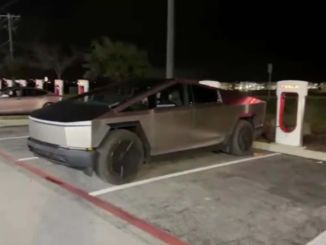
In a significant blow to the electric vehicle (EV) sector, General Motors (G.M.) has announced a $1.6 billion charge against its third-quarter earnings, primarily due to the recent elimination of the $7,500 federal tax credit for new EVs. This policy change, enacted as part of President Trump’s spending bill and effective at the end of September 2025, has accelerated an already slowing demand for battery-powered vehicles. The charge reflects a reassessment of G.M.’s EV manufacturing footprint, including devalued plants, equipment, and canceled supplier contracts, signaling broader industry challenges in transitioning to electrification without government support.
The loss breaks down into a $1.2 billion accounting adjustment for EV capacity and a $400 million cash impact from terminated contracts. G.M.’s Chief Financial Officer, Paul Jacobson, highlighted that the company has yet to achieve profitability on its electric models, making the subsidy’s end particularly painful amid lower-than-expected sales volumes. This comes after a slowdown in EV adoption that began in early 2024, with industry experts noting that consumers are increasingly opting for hybrids or traditional gas vehicles due to cost concerns and charging infrastructure limitations.
G.M. has indicated that further charges could be possible as it continues to evaluate its EV strategy, focusing on cost reductions to make models more affordable in a subsidy-free market.
Impact on G.M.’s Q4 2025 Earnings Projections
The $1.6 billion hit is recorded as a special item in Q3 2025, which could lower reported earnings but is often excluded from adjusted figures that analysts focus on. As of October 16, 2025, analyst estimates for G.M.’s Q3 EPS stand at $2.32, down from the year-ago $2.96, reflecting the anticipated slowdown. For Q4 2025, projections are more subdued, with an average EPS estimate of $1.87 (ranging from $0.54 to $2.49), compared to $1.92 in Q4 2024. Revenue for Q4 is forecasted at $44.38 billion, a 7% decline year-over-year.
Full-year 2025 EPS estimates have been revised upward slightly in recent weeks to $9.42, despite the charge, suggesting optimism in G.M.’s core internal combustion engine business and potential cost-saving measures in EVs. However, analysts warn that without subsidies, EV sales could drop further, pressuring margins. Recent estimate revisions show 3 upward adjustments for Q4 EPS in the last week, indicating some resilience, but the overall sales growth for 2025 is projected at -3.46%, with 2026 showing minimal improvement at -0.33%.
This charge may force G.M. to scale back EV ambitions, potentially delaying new model launches and shifting resources to more profitable segments like trucks and SUVs.
Tesla’s Outlook for Q4 2025
In contrast to legacy automakers, Tesla appears better positioned to weather the subsidy storm, thanks to its established brand loyalty and less reliance on incentives. With a 43.1% U.S. EV market share, Tesla has not issued similar negative guidance, and analysts suggest the retreat by competitors like G.M. and Ford could allow Tesla to regain ground.
The company recently introduced lower-cost variants of the Model Y and Model 3 to mitigate the tax credit loss, aiming to maintain affordability.For Q4 2025, analysts project an EPS of $0.47 (down from $0.73 year-ago), with revenue at $25.67 billion, essentially flat year-over-year. This follows a strong Q3, where deliveries rose 7%, and EPS estimates sit at $0.55.
Full-year 2025 EPS is forecasted at $1.71, a 29% decline from 2024, but 2026 shows a rebound to $2.46, with revenue growth of 17.5%.
Recent revisions are mixed, with upward adjustments for Q3 but slight downgrades for Q4, reflecting concerns over a potential Q4 demand dip due to pre-expiration pull-forward buying. However, Tesla’s focus on innovation, including autonomous driving tech, could drive long-term gains, especially as rivals pull back.
Ford’s Situation in Q4 2025Ford is also grappling with the subsidy elimination, with CEO Jim Farley predicting EV demand could halve without the tax credit.
Earlier in 2025, Ford projected up to $5.5 billion in EV losses for the full year, underscoring ongoing unprofitability in its electric division despite a 30% jump in Q3 EV sales.
Analyst estimates for Q4 2025 show an EPS of $0.30 (down from $0.39 year-ago), with revenue at $44.05 billion, a 2% decline.
Q3 EPS is pegged at $0.35, and full-year 2025 at $1.14, a sharp drop from 2024’s $1.84, with minimal revenue growth of 0.16%.
Projections for 2026 offer some recovery, with EPS at $1.38 and flat revenue. Recent estimate changes are downward for Q4 and full-year figures, with more downgrades than upgrades in the past month, highlighting “Ford-specific” issues like production delays and rising costs.
Ford may pivot further toward hybrids, which have seen stronger demand, to offset EV weaknesses.
What It Looks Like for Investors
For investors, the subsidy’s end amplifies divergence in the auto sector. G.M. shares rose despite the write-down, buoyed by strong traditional vehicle sales and upward EPS revisions, suggesting the market views the charge as a one-time reset.
However, prolonged EV slowdowns could cap growth, making G.M. a cautious hold for those betting on a hybrid-focused recovery.
Tesla stands out as a potential winner, with analysts raising price targets amid AI momentum and rival retreats.
Its Q4 projections, while modest, position it for 2026 upside, appealing to growth-oriented investors willing to tolerate volatility—especially with Q3 earnings due October 21.
Ford presents higher risks, with muted 2025 outlooks and persistent EV losses dragging on profitability.
Investors might find value in its dividend yield but should watch for further downgrades amid industry pressures.
Overall, the EV subsidy’s demise underscores a shift toward market-driven adoption, favoring innovators like Tesla over legacy players. Investors should monitor upcoming earnings for clearer signals on adaptation strategies in this evolving landscape.
Got Questions on investing in oil and gas? Or do you have a Tax Burden in 2025?
Crude Oil, LNG, Jet Fuel price quote
ENB Top News
ENB
Energy Dashboard
ENB Podcast
ENB Substack







